What is Anchor Text?
Anchor text is the visible, clickable text in a hyperlink that is displayed on a webpage.
For example, in the sentence “Welcome to our site, click here to learn more about digital marketing”, “click here” is the anchor text.
The HTML syntax for anchor text is:
<a href=”http://www.example.com”>Example Anchor Text</a>
How Search Engines Use Anchor Text in SEO
Search engines use the descriptive text in the anchor of a link in order to help determine the relevancy and topical nature of the page that it’s linking to.
For example, if a particular webpage has lots of backlinks with the anchor “dog training”, “dog training tips”, “how to train your dog”, then search engines will be able to recongise and understand the context of the target page.
In addition to anchor text, search engines also analyze the content of the source page (i.e. the page the link is on) and the keywords and title tag of the target page in order to determine relevancy and content. This process then allows Google to return more relevant results to their users in the search queries.
Finally, SEOs have proven in the past that when you have two links on a page that both point to the same destination, Google only counts the anchor text of the “first” link when assigning relevancy.
Best Practices for Using Anchor Text in SEO
Although having targeted, relevant anchor text is great for SEO and ranking for your keywords, the historical abuse of artificial anchor text by SEOs eventually led to Google launching a new optimization penalty called the Penguin Update in April 2012.
The Google Penguin update served to counteract the manipulative abuse of anchor text and artificial backlinks by penalizing sites and removing their rankings in the search results. This is because the manipulation of your own backlinks and creating optimized anchor text is a direct violation of Google’s Webmaster Guidelines (under Link Schemes) as shown in the image below:
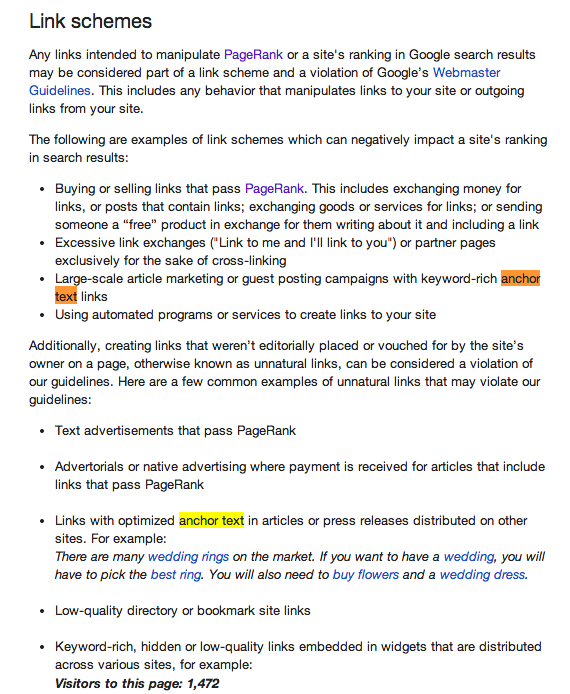
Therefore, you’re probably asking yourself “if anchor text is important for SEO, but Google gives out penalties for over-optimization, what’s the best practice for building anchor texts now?”
The answer lies somewhere in-between. Although anchor text is still an important relevancy factor in SEO, over the years Google Bots have become smarter and are now able to detect the relevance of a website based on keywords, synonyms and the title tag alone.
As outlined by this Moz.com Post-Penguin Anchor Text Case Study, and backed up by QuickSprout.com, websites no longer need 100s of optimized anchor text in order to rank well in the search engines. It can sometimes be enough to just have 5-10 links with a broad range of mixed anchor text with some of your main keywords.
For example, if I wanted to rank for a term such as “buy gold” on BuyGold.co.uk then I might have links with the following anchor text:
- BuyGold.co.uk
- http://www.buygold.co.uk
- Click here
- Website.com
- Buying gold
- This site
- Where to buy gold
- Gold bullion store
- Click here to buy gold
- Buying gold online
Internal Linking and Anchor Text
Google also analyses the relevance of content by internal links as well as external links. Therefore, you should make sure you have a good internal linking structure on your site that uses relevant, targeted keyword anchor text and distributes Page Rank across your site. Similar to external links, make sure you mix up the anchor text for your internal links as this can also lead to over optimisation issues.
How to Analyze your Website Anchor Text
In order to analyze and monitor backlinks to your site, you’ll need to use a backlink monitoring tool as explained in this previous article. For those new to SEO, we recommend using the free version of OpenSiteExplorer.org.
What Does a Natural Anchor Text Backlink Profile Look Like?
The most common keywords in your backlinks should include references to your website name, raw URL (e.g. http://www.website.com) or neutral anchors that people often write when linking to a site such as “click here” or “see this”.
Most SEOs recommend at the bare minimum to have no more than 30% of your anchor text for a specific keyword, however even this is probably too high. I would probably say a maximum of 10% of your anchor text should be for one keyword (including exact-match domains).
A normal distribution of anchor text for a website normally looks something like this:
- 30% – Website Name
- 15% – www.websitename.com
- 15% – WebsiteName.com
- 5% – http://www.websitename.com
- 3% – here
- 32% – mixture of other anchor texts
You can see in the below the ratio of anchor text in natural backlink profiles:
Wikipedia.org Backlinks Case Study:
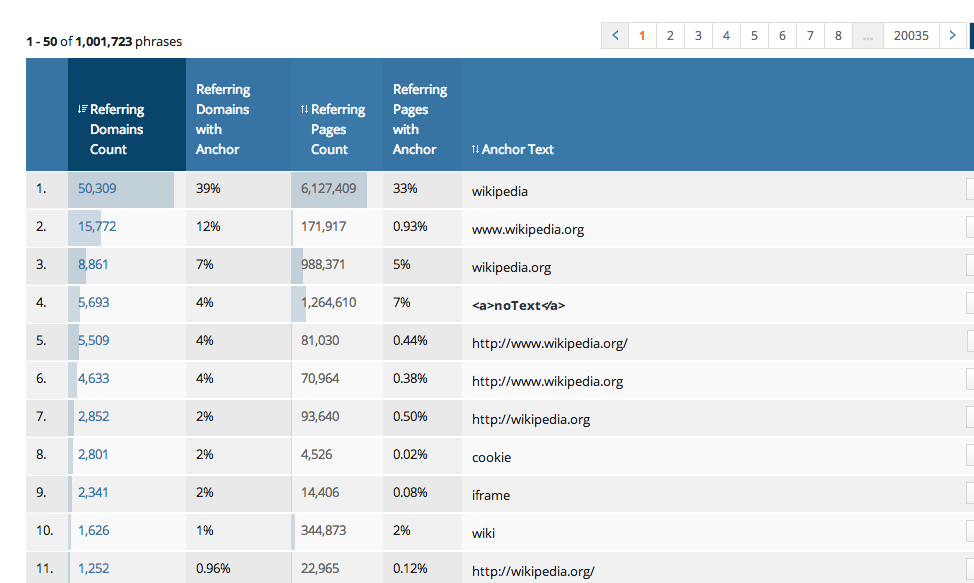
Amazon.com Backlinks Case Study:
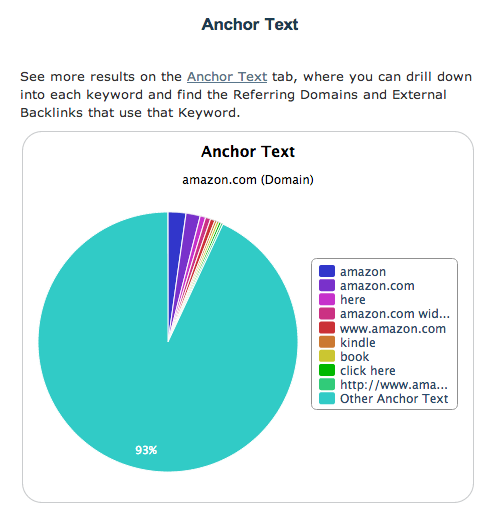
Tesco.com Backlinks Case Study:
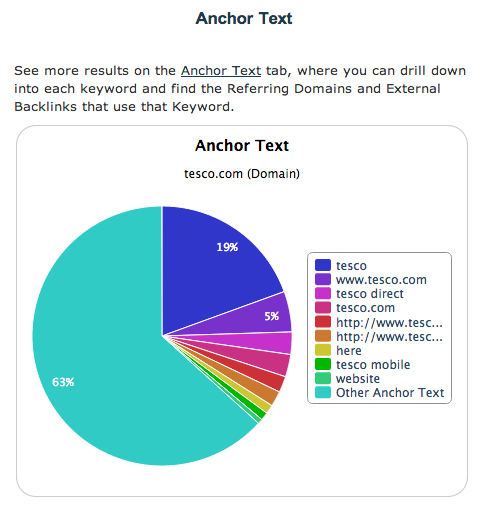




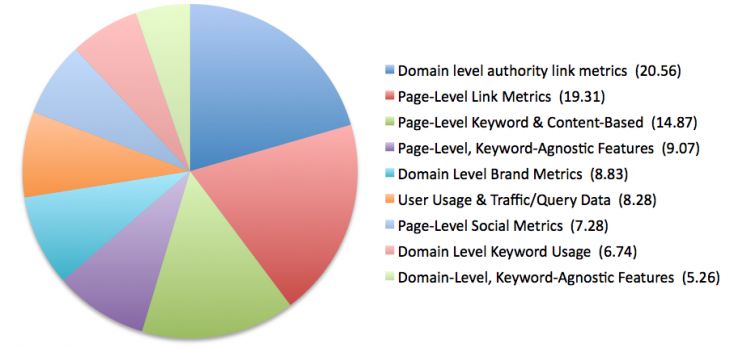
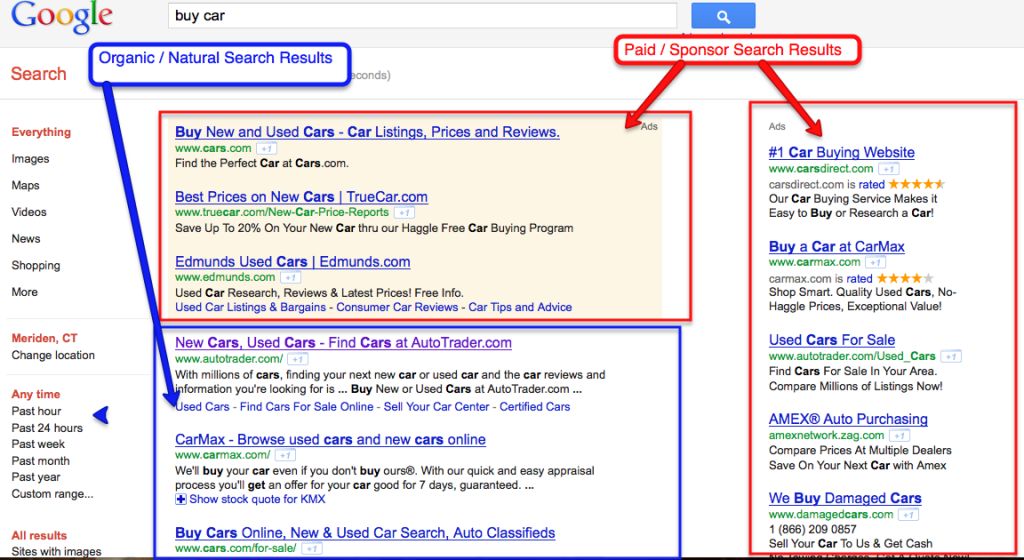

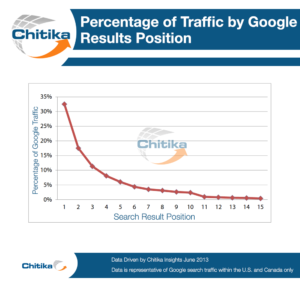

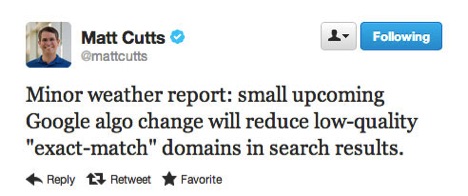
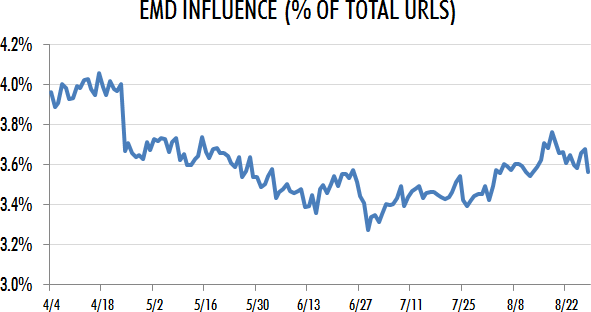
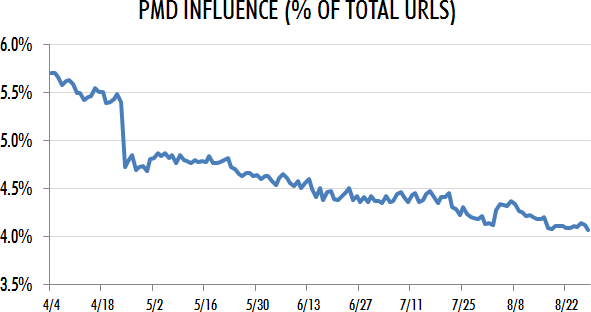
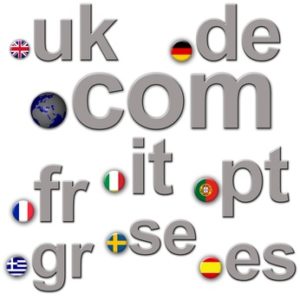 Google uses the domain extension of your site to understand the geo-target preferences of your site.
Google uses the domain extension of your site to understand the geo-target preferences of your site.